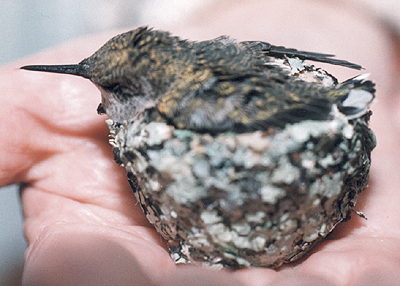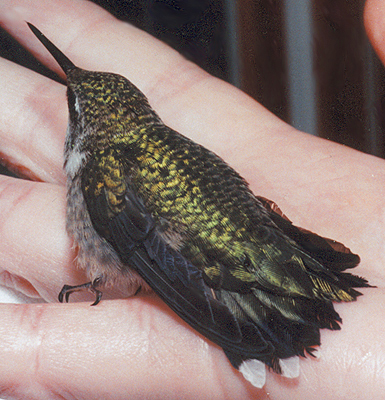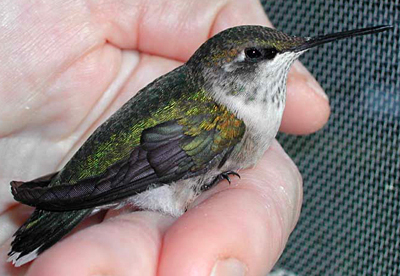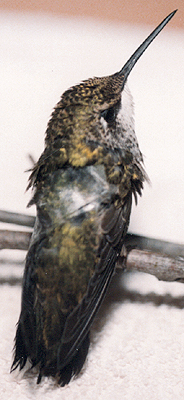There are four photos on this page:
1. Nestling Ruby-Throated Hummingbird,
in typical nest made of lichens and spiderwebs.
 2. Fledgling Ruby-Throated Hummingbird.
2. Fledgling Ruby-Throated Hummingbird.
 3. Fledgling Ruby-Throated Hummingbird
3. Fledgling Ruby-Throated Hummingbird
that has recovered from an injury
(side view)
 4. Adult Ruby-Throated Hummingbird
4. Adult Ruby-Throated Hummingbird
with a bandaged wing

Hummingbirds are the jewels of the bird world, thought
by some to be related to Swifts. They eat nectar and tiny insects
and must feed almost constantly in order to stay alive. Hummingbirds
are able to slow their metabolism and lower their body temperature
("torpidity") at night or when food is scarce. These
birds are fiercely territorial and known for spectacular aerial
displays. The female alone builds the nest and raises the young.
In spring and fall these tiny birds migrate nonstop across The
Gulf of Mexico -- 600 miles of water! Despite their small size,
Ruby-Throated Hummingbirds are fearless and have an outgoing
temperament.

 [Home]
[Whoooo are we?] [the
Story of Baby Birds] [Myths & Misconceptions]
[Home]
[Whoooo are we?] [the
Story of Baby Birds] [Myths & Misconceptions]
[FAQs] [How you can help] [Photo Gallery] [Contact]
[Donations]
[Shopping]
[Emergency? Click
here.]
This website and all its contents
belong to The Place for Wild Birds, Inc.
Copyright © 2002, all rights reserved. Reproduce only with
permission.
All photographs by Walter S. Bezaniuk. Most illustrations by
Kathleen Frisbie.
Site design and some illustrations by Sara. |